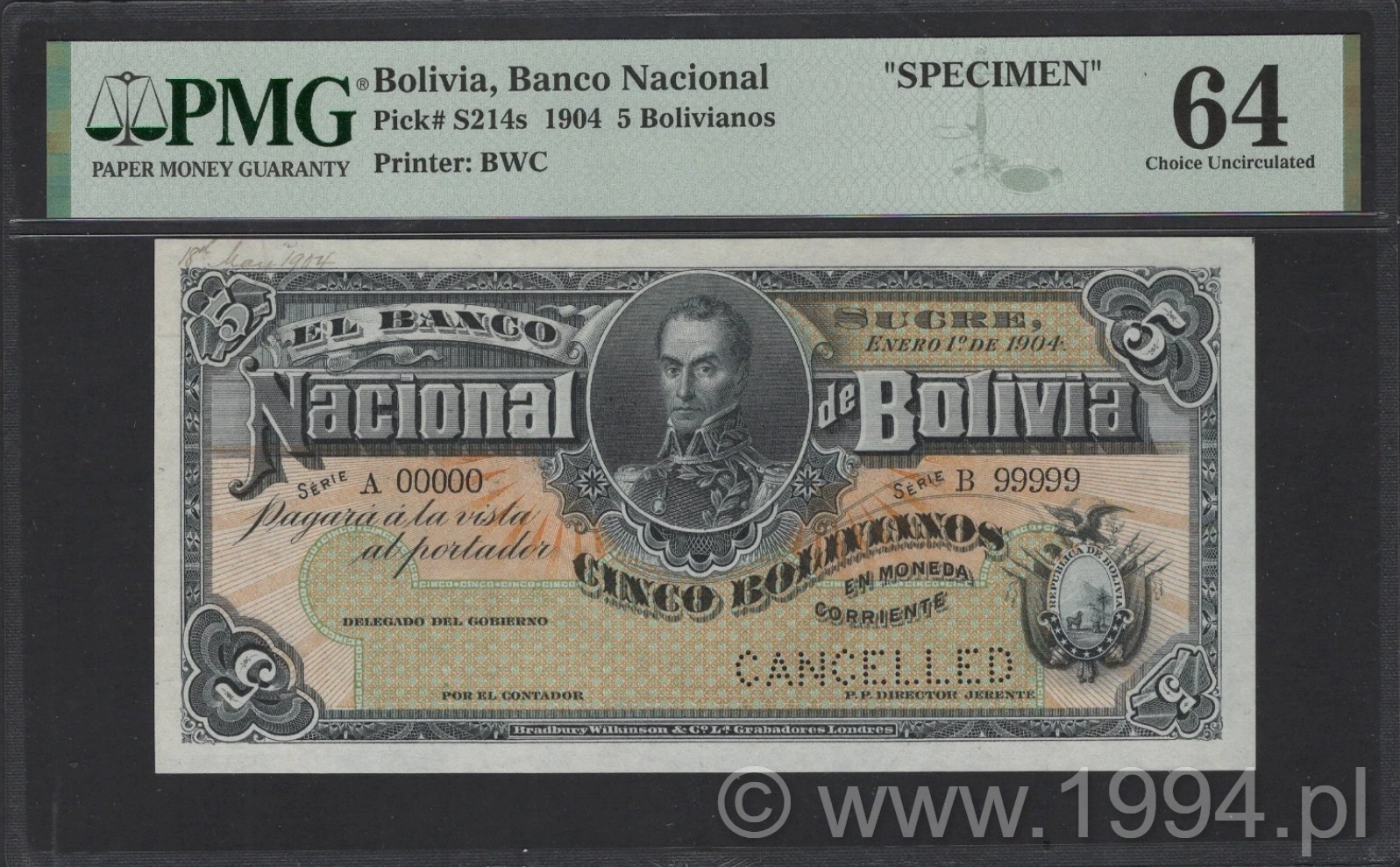Description and research notes
Specimen of the 1904 Banco Nacional de Bolivia 5 Bolivianos, engraved and printed by Bradbury, Wilkinson & Co. (BWC) in London. The note bears the date SUCRE, 1 de Enero de 1904, and features the portrait of Simón Bolívar at center—an enduring symbol of republican legitimacy. The engraving itself traces back to a mid-19th-century French lithograph of Bolívar that was reused and refined by BWC for several Latin American issues, earning it the nickname 'the export Bolívar.' Surrounding design elements include elaborate guilloché frames, floral counters, and a small vignette of Potosí’s Cerro Rico, underscoring the country’s reliance on silver mining wealth.
The Banco Nacional de Bolivia, founded in 1872, became the most important commercial bank in the country by the turn of the 20th century, serving as a de facto national issuing authority before Bolivia developed a centralized reserve structure. Its notes were critical to trade and daily transactions, yet most circulated examples suffered heavy attrition given the harsh climate, limited banking infrastructure, and chronic political instability. The Cerro Rico vignette carried particular symbolic weight: while it implied national prosperity and backed the promise of value, by 1904 the collapse of world silver prices had already undermined the very foundation of Bolivia’s fiscal stability.
Specimens such as this provide the only opportunity to appreciate the note in its original state: crisp ink contrasts, strong intaglio detail, and intact margins, here preserved with perforated 'CANCELLED' markings. The vivid orange and black inks demonstrate BWC’s skill at combining color and linework for security and aesthetic effect.
Graded PMG 64 Choice Uncirculated and standing at the top of the population report, this example ranks as the finest known for the type. Beyond rarity, it illustrates both the artistry of BWC’s export engravings and the transitional stage of Bolivia’s financial system in the early 1900s—when private banks carried national currency responsibility. As such, it is a cornerstone type for collectors of Bolivian paper money and a reference piece for the study of South American banknote history.
